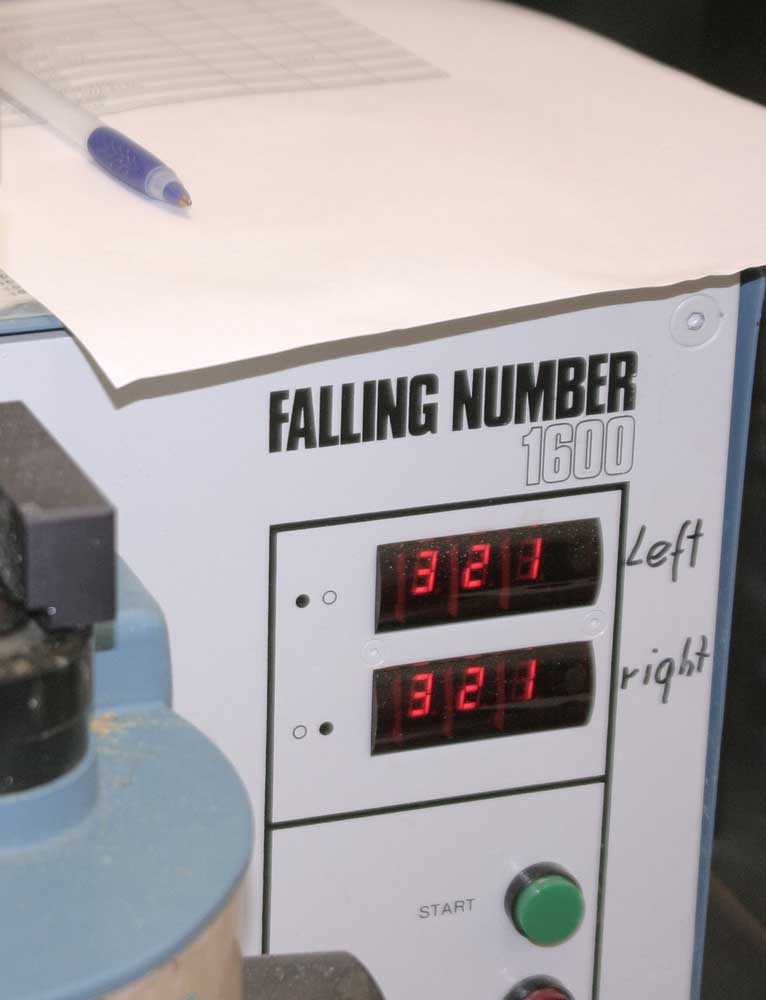USDA advertises for falling number researcher
Published 5:30 pm Friday, September 6, 2019

- Capital Press File A sample of wheat is tested for sprout damage in the USDA Agricultural Research Service laboratory in Pullman, Wash. The Pacific Northwest industry is concerned that rain and temperature variations may cause sprouting in wheat.
The USDA Agricultural Research Service is advertising for a key researcher to help farmers address a starch problem that can develop in wheat, costing millions of dollars in lower prices.
The ARS is advertising for a plant molecular biologist, plant physiologist or geneticist, who will work on the Washington State University campus in Pullman.
The salary ranges from roughly $75,000 to $115,000 per year.
The posting went up Aug. 29 and will remain open for one month, said David Weller, leader of the ARS wheat health, genetics and quality research unit.
He hopes to have the position filled by the end of the year.
The industry uses the falling number test to detect starch damage caused by alpha-amylase enzyme activity in wheat. A low falling number test result indicates starch damage in the flour, leading to poor quality in baked goods and other products.
Congress provided $1 million for falling number research in 2018. The USDA was slated to post the position in January, but was delayed by the government shutdown.
“As always, it takes time for these things to be done, but we’re very excited that we’re moving forward on what I see as a very important position,” Weller told the Capital Press.
“We’re really excited about this position,” said Mary Palmer Sullivan, vice president of the Washington Grain Commission.
Starch damage doesn’t happen consistently. It appears to be related to wide temperature swings or rain at certain points in wheat’s growth cycle.
“When it does create problems, it costs the farmers a lot of money,” Sullivan said. “We’re hoping this position will help alleviate that, answer some questions and potentially work with breeders at WSU and ARS to identify why we’re having these problems, so they can incorporate this into their breeding program.”
While some farmers this year have experienced low falling numbers, it has not been widespread, nor does it seem to be impacting exporters, Sullivan said.
The researcher will be dedicated specifically to solving the falling number problem.
“This problem, we think, needs to be attacked on the level of very fundamental research,” Weller said. “Once you identify and determine those biochemical, plant physiological responses that are occurring and the basic work is done, then you can move forward, applying that knowledge to developing new varieties and new treatments for this.”
The USDA is searching nationally, including placing notices with professional organizations and ads in scientific journals.
“I think we’re going to get a good cross section of individuals,” Weller said.
Candidate applications first go to USDA ARS headquarters, which will send them to Weller.
A committee of ARS and WSU scientists and stakeholders will invite several to campus to interview.







